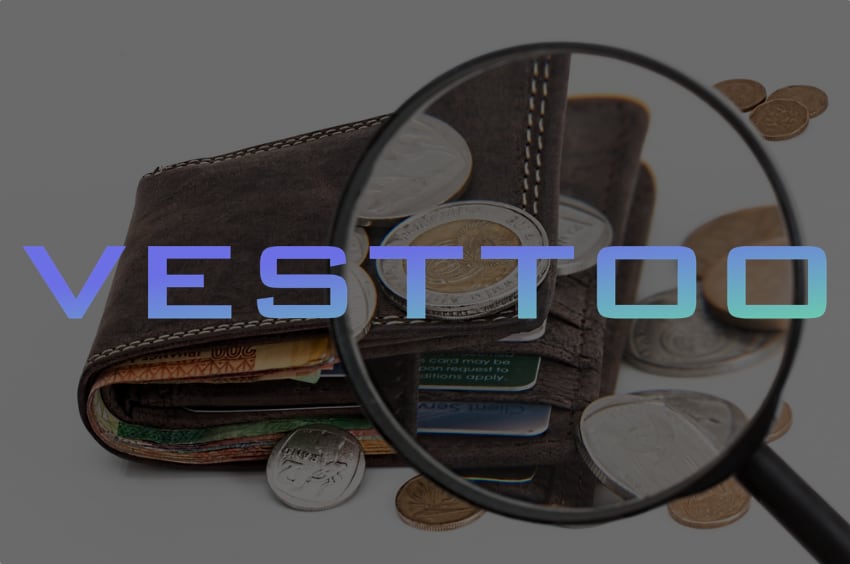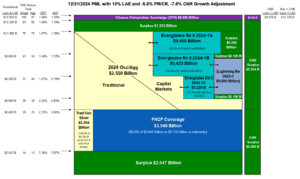Vesttoo case: Cell control dispute continues. Creditors say cash withdrawn

The latest filings in the Vesttoo bankruptcy case show that the battle over control of and access to segregated cells used for Vesttoo linked reinsurance contracts continues, while the counsel for the unsecured creditor committee has raised a concern that cash may have been withdrawn from some of them.
As we’ve been reporting, the “ownership” or control of segregated cells that housed Vesttoo reinsurance deals has been in focus and it is clear that this continues to be the case.
As a reminder, Vesttoo claimed ownership of cells within Aon’s White Rock SAC structure back in August and said they should fall within its bankruptcy estate.
As we reported yesterday, this continues to be at the crux of an ongoing dispute in the various legal actions related to the Vesttoo fraudulent letters of credit (LOC), with Vesttoo and the unsecured creditor group pushing for all action to fall under the bankruptcy court, where as Aon-linked action pushes for a faster liquidation and restructure to try and recover any value remaining for their clients.
Hence, yesterday’s article that as the Bermuda Supreme Court hearing over the liquidation of cells linked to Aon intellectual property reinsurance transactions nears, the joint provisional liquidators appointed and Aon’s White Rock Insurance (SAC) Ltd. are seeking clarity over whether they can attend the hearing, without violating the stay order of the US bankruptcy court.
Now, the Committee of Unsecured Creditors, featuring Clear Blue, Porch insurer Homeowners of America Insurance Company, Markel Bermuda Limited, Corinthian Group’s Proventus Holdings, LP, and United Automobile Insurance Co., and Vesttoo as the debtor in the bankruptcy case, have both responded through new bankruptcy court filings.
Both parties are urging the bankruptcy court to formalise an order to ensure that the JPL’s to White Rock cannot take control of the segregated cells in question and that the Bermuda court hearing is open and transparent and that a stay order remains enforced and that the Bermuda court proceedings abide by it as well.
Which again comes down to the ownership of these segregated cells and therefore the control of any assets linked to them, or contained within.
With Vesttoo and the Creditors claiming the cells should fall under the bankruptcy estate, it would mean any assets contained or linked to them would form part of the estate, and therefore be recoverable to the benefit of all creditors, it seems.
Where as, the view of the JPL’s to the White Rock SAC cells, operating on behalf of the Bermuda court, as well as Aon itself, seems to be that the cells remain under the ownership of White Rock and any assets should benefit the ultimate ceding companies and those directly linked to these transactions, if any recoveries are to be made.
It’s important to remember that we’re talking about a major international fraud here, with potentially billions of dollars in value lost or stolen, so there are companies which are significantly out of pocket at this time.
As in any bankruptcy case, each creditor and beneficiary to it wants to recover as much as they can, to make themselves and their clients as near to whole as possible. Which is why we’ve always highlighted this cell ownership discussion as critical.
But now, the tone has been ratcheted up a notch or two, with the Creditors making it very clear that their concern is over the potential for a failure “to maintain the integrity of Vesttoo’s Segregated Accounts in violation of the Interim Stay Orders.”
After which they state, “For example, in the past few days the Committee’s counsel has learned that a large amount of cash may have been withdrawn from certain of the Vesttoo Segregated Accounts since mid-July 2023. If that turns out to be true, and any such withdrawals occurred on or after August 24, 2023, when the first of the Interim Stay Orders was entered (D.I. No. 47), that would be a violation of such orders.”
This could be important, as any withdrawal of cash from the segregated cells could bring into focus the contract language for the reinsurance arrangements, which should describe the circumstances under which the cells were supposed to be used and accessed, for the reinsurance deals in question.
The Creditors are asking the JPL’s and White Rock to “come to the table” to negotiate a way forwards and resolve contested matters, to provide clarity over the cell ownership, what the Bermuda proceedings will entail, and that they will not seek control of the cells in question, it seems.
Vesttoo, as debtors, have also filed a lengthy document with the court, requesting similar and then going into some detail on a specific transaction, to provide an example to the bankruptcy court of how they are used in reinsurance.
Which is an interesting disclosure, as it describes a workers compensation reinsurance deal for Omaha National Insurance Company, brokered by Guy Carpenter, on which it states that as of July 31st the balance of a trust account for this transaction stood at almost $16.2 million.
However, no balances have been received for that account and its trust since then, Vesttoo claims.
Which perhaps goes further to explain why the ownership of these cells has become a central disputed point in the Vesttoo scandal, as it seems to be unknown by some (perhaps not by all parties though) whether the residual value related to reinsurance transactions still exists in or linked to the cells, or if it could have been siphoned off in the fraud activity, or potentially withdrawn by some party (again, potentially the fraudsters).
The filing from Vesttoo is requesting similar relief from the courts, over the clarity related to cell ownership or control, the upcoming Bermuda court proceedings and the interim stay orders ongoing effectiveness.
All of which raises a plethora of questions, not least how do the legal actions move forwards while ensuring value recovered after this fraud debacle is apportioned correctly, to those it should rightly sit with.
But it also raises questions over what could have been withdrawn from segregated cells linked to Vesttoo related reinsurance deals, where that value now sits and whether it has been misappropriated by fraudsters, something the bankruptcy court will no doubt delve into and look to clarify.
Parties are looking to protect their interests and their clients, understandably, but right now the ownership of cells appears a point of contention between two separate creditor groupings, which is going to require court orders to clarify and it seems likely one side will end up disappointed as a result.
It must be remembered that underneath the cells lies the question of what value remains, versus what was siphoned off through the fraudulent activity. It seems critical at this time to get the necessary disclosure as to what remains and who it belongs to, as some could even still be supporting in-force reinsurance arrangements.
Read all of our coverage of the alleged fraudulent or forged letter-of-credit (LOC) collateral linked to Vesttoo deals.







